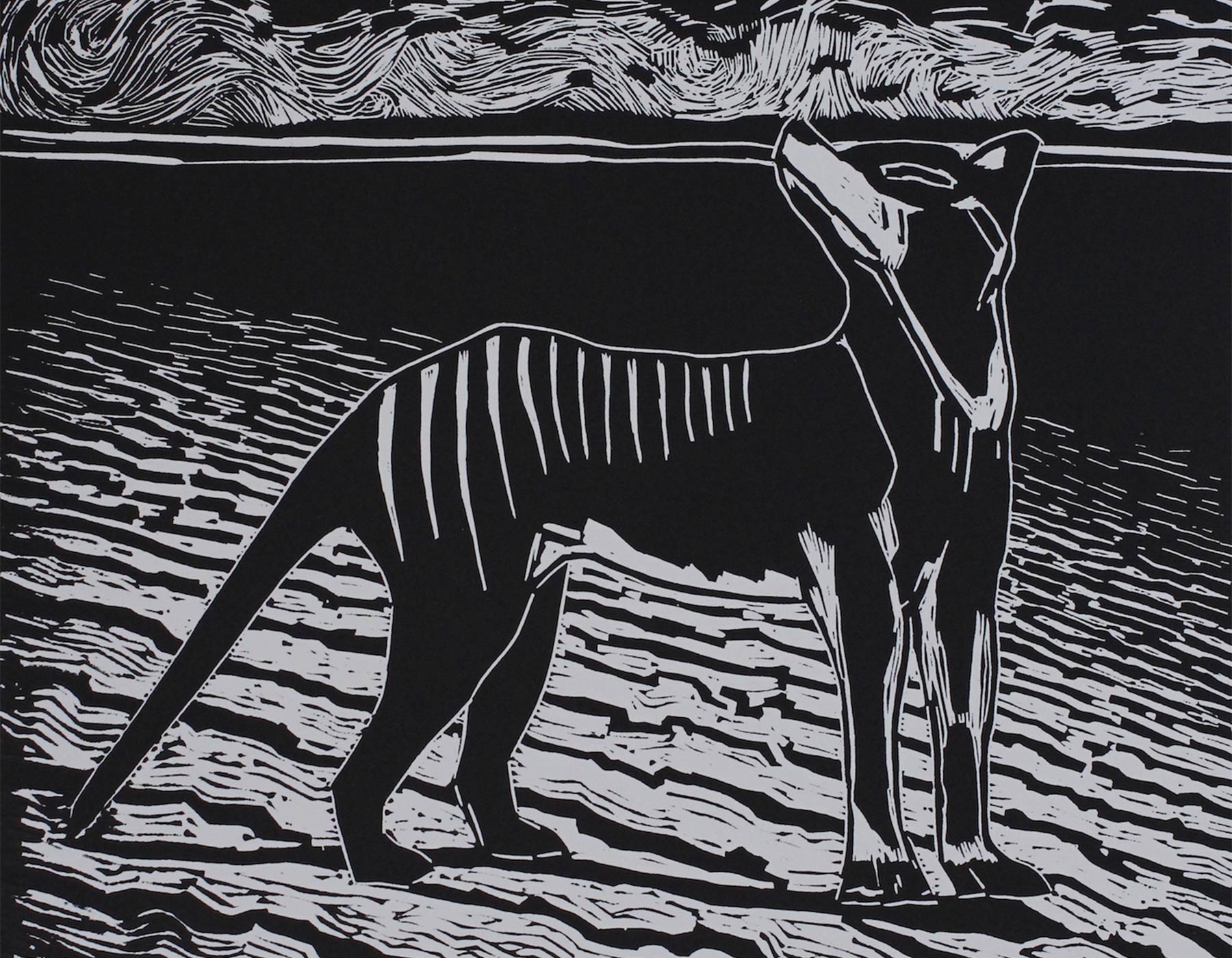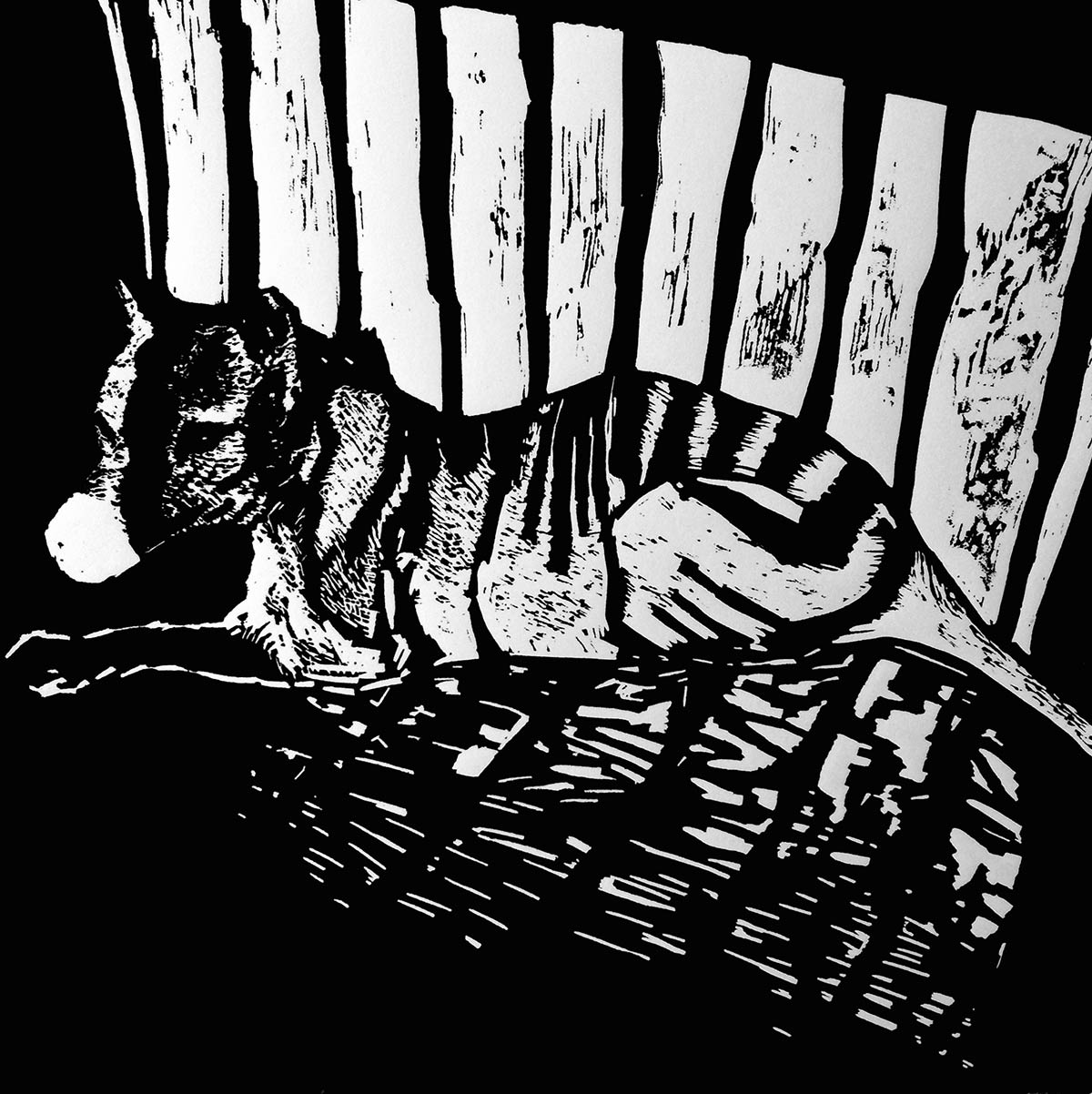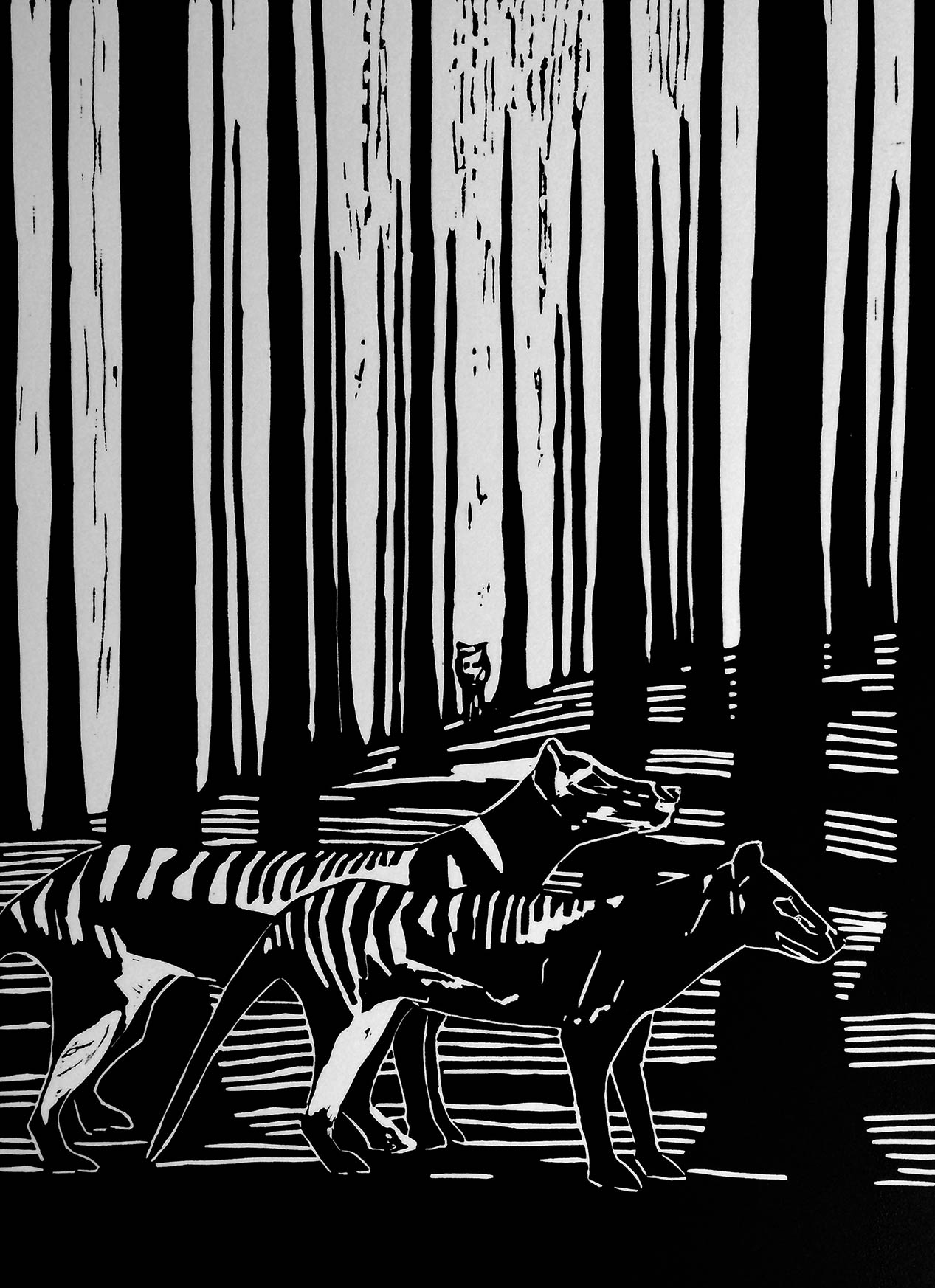
Katie Glaskin:
Scent of a falling dark
Katie Glaskin discusses her paintings and linocut prints drawing on historical images of thylacines to explore themes of loss, endangerment and extinction.
April 27, 2018
In Interviews,
Printmaking, Q&A
Imprint: What is the premise for this exhibition and how have you been working towards it?
Katie Glaskin: This exhibition began with a dream in which I encountered an animal in the city of Perth. It reminded me of something: a Tasmanian tiger, but it was out of place and time. And then (in the dream) the animal was gone, before I had a chance to fully discover it. Part of what struck me about the dream was how little I knew about thylacines; the animal was both familiar and strange, and this raised questions for me about memory, perception, and imagination, and about place and trace. While the thylacine is familiar in some ways—iconic of extinction—to most of us it is also completely unknown. Not understanding what we have lost multiplies the tragedy of the loss of animals like these. And the same is true of other endangerments and extinctions, metaphorical and actual, taking place all the time.
The Tasmanian tiger has a more complex extinction history than most, with a mainland extinction occurring an estimated 3500 years ago, and a more recent Tasmanian extinction marked by the death of the last thylacine in captivity, which died (of exposure) in 1936. This followed a bounty put on the thylacine and advance warning of the species’ impending extinction a long way before this particular animal’s death. While researching the thylacine I came across a number of photographic images which inspired me to begin the work for this exhibition. This has been a gradual process of discovery, one that has led me to further explore extinction in general.
Imprint: What are some of the foundation ideas for the work in the exhibition, and what are visitors likely to experience?
Katie Glaskin: Emblematically, the thylacine stands between a deep historical past and uncertain species futures, with many scientists regarding the earth to be in the midst of what is being called ‘the Sixth Extinction’. Extinction is a process, not an event. It is already occurring long before the death of an animal that is the last of its kind. It raises issues concerning our relationship with the world and our responsibilities to it, and to our fellow inhabitants, the non-human animals with whom we share it. So it is as much about humans as it is about the species that become extinct. Because it is about losing something unique that can never be regained, it is a theme that speaks for itself. Australia is home to many unique animals, a number of which are endangered or have become extinct. But it also speaks metaphorically to other kinds of endangerments, losses and extinctions. This seems imperative to reflect on at this time when we are confronted on a global scale with issues of climate change, nuclear proliferation, and so on.
The images in this exhibition represent a journey of discovery, of which sadness and celebration of this amazing marsupial both play a part. The exhibition contains linocut prints and large scale acrylic paintings, and works across the two different mediums are often in dialogue with each other. Many of the photographic images on which these works are based have a haunting, affective quality, and although most of my thylacines have been repatriated out of zoo settings, I think some of these qualities associated with the subject remain. The print from which this exhibition gained its title, Scent of a Falling Dark, has a certain ambiguity and can be understood in different ways. The same is true of a number of images in the exhibition.
Imprint: How was the work developed technically and what were some of the challenges involved?
Katie Glaskin: A technical challenge involved with working with a subject like the thylacine is needing to rely on photographic images as the basis to learn about their visual form. This has its own set of challenges, given that the camera can conceal as much as it can reveal. Many of the images are low in resolution, poor quality, and grainy. Part of the challenge too is that what I am drawing on is mediated through a very partial historical record. There are very few images of the thylacine overall—I keep on searching—and many of those that do exist are of the same individuals.
Imprint: How was the work developed technically and what were some of the challenges involved?
Katie Glaskin: I will continue to work with the theme of extinction, and I am not ready to let go of the thylacines yet. I am spending more time interrogating images of thylacine museum specimens and these raise a range of questions, including about cloning extinct animals, which is something scientists are trying to do with the thylacine.
I have also become increasingly interested in the relationship between images of extinct species—photographic images, but also images of extinct species in rock art—and our readings of them. In archaeology, for example, there are debates about some rock art depictions and about whether something identified as a particular species is really the creature it is said to be. I find these issues compelling because they raise questions about ways of seeing, ways of knowing, and about our human engagements and entanglements with the world. The reported (unconfirmed) sightings of Tasmanian tigers since their declared extinction are also interesting, because they are a kind of haunting, like the photographic images of lost species. At the same time, I am also drawn to endangered species (two numbats have found their way into this exhibition). So there is a range of future projects that will build on this one.
Scent of a Falling Dark, is at Moore’s Building, 46 Henry St, Fremantle, 28 April-13 May.






